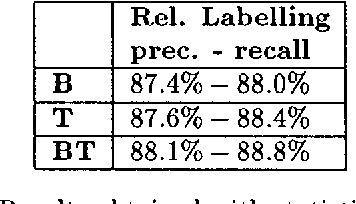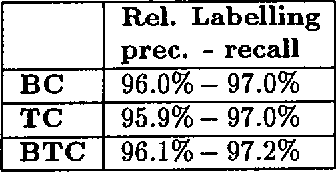Developing a hybrid NP parser
Paper and Code
Apr 24, 1997



We describe the use of energy function optimization in very shallow syntactic parsing. The approach can use linguistic rules and corpus-based statistics, so the strengths of both linguistic and statistical approaches to NLP can be combined in a single framework. The rules are contextual constraints for resolving syntactic ambiguities expressed as alternative tags, and the statistical language model consists of corpus-based n-grams of syntactic tags. The success of the hybrid syntactic disambiguator is evaluated against a held-out benchmark corpus. Also the contributions of the linguistic and statistical language models to the hybrid model are estimated.
* Proceedings of 5th ANLP, 1997 * 8 pages, uses aclap.sty, epsf.sty
 Add to Chrome
Add to Chrome Add to Firefox
Add to Firefox Add to Edge
Add to Edge